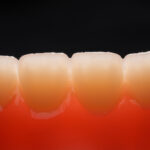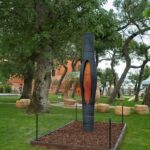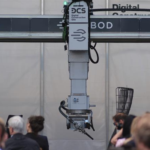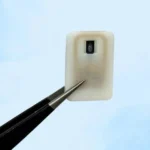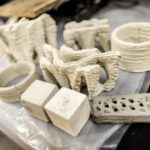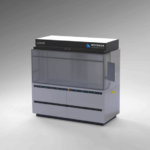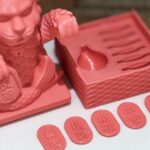A lab in Korea has just fabricated micro-sized biostructures, applying mechanical engineering knowledge to biofabrication. These biostructures act as a scaffolding or regenerative placeholder, helping cure major injuries. The team’s work could aid in the repair of complex bone and cartilage fractures, in addition to non-transplant based treating finish-stage liver disease.
Dong-Woo Cho, director of the Intelligent Manufacturing Systems Lab in the Pohang College of Science (POSTECH) is the lead researcher. He believes that this sort of research is ripe for medical purposes. He discussed the outcomes and the direction with experts in the medical field. These discussions motivated him to work with biocompatible materials. The group has since built a global network of experts in multiple sciences, matching their engineering skills with those of biologists and medical experts.
The Science of Medical Biofabrication
The image above shows the potential reaches of their research. A rabbit’s kneecap with a scaffold helps the regeneration process immensely. In the research, the team tuned scaffolds to complement cartilage and bone regions. They found that with such structures, the rabbits could easily regenerate tissue within eight days. The full research is available in the journal Biofabrication.
The potential of the research is also fascinating in that it allows doctors and medtechs to print structures to the precise specifications of their patients. As a result, each device could be suitable for the patient’s biology down to the last variable. This may not seem like a big deal, but considering how diverse biological differences can be, this could save millions of lives.
“In order to regenerate liver tissue, it is very important to realize the hepatic histological structure as it is,” Cho points out. “In other words, you need to promote the growth of hepatocytes and hepatocyte surrounding cells, as well as blood vessels.” As such, the team’s bioprinting may be able to establish and keep a co-cultured environment of multiple kinds of cells.
Another design feature the team are looking into is strength. As in how to optimize the scaffold’s strength to ensure that its form persists during treatment. The research is proving quite fruitful. Such bio-medical advances crop up more often than before. This is largely because of the proliferation of bioinks, which the team is also dipping their toes into. Their work is truly proving to be a valuable mix of engineering and biomedicine.
Featured image courtesy of POSTECH.



